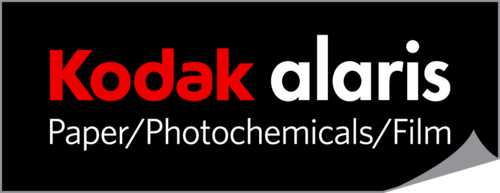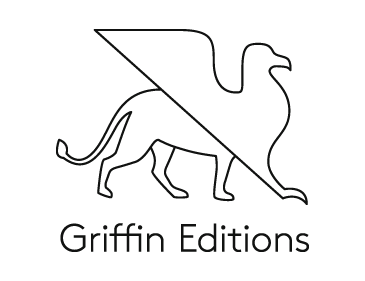Interview: Guanyu Xu
Guanyu Xu received the Film Photo Award in the Fall of 2019. One year later (plus a bit of a delay due to Covid19 travel restrictions), andrew uhrig and Guanyu have a chat about his evolving project.
andrew uhrig: Hi Guanyu! How are you at the moment?
Guanyu Xu: Hi andrew,
Thank you for having this conversation with [me]. It’s quite busy at this moment:
Besides working on my projects and upcoming exhibitions, the school just started and I’m also trying to move into a new studio space. How are you doing?
au: I’m doing alright! You sound busy indeed. Before we jump into your work, may you please share a bit about your personal background?
GX: I was born and raised in Beijing, China. In January 2014, just past 21 birthday, I moved to Chicago for school and have been living here since then.
© Guanyu Xu
JZ-08132017-10032020, 2020 © Guanyu Xu
LL-09292014-01042020, 2020 © Guanyu Xu
au: Looking at your pieces in Resident Aliens, knowing you’ve lived in Chicago for seven years makes them that much more impactful. Beyond school, do you think you will stay in Chicago or move elsewhere?
GX: I'm certainly trying to figure out what's next and I have been applying to different opportunities and see where they would lead me to.
au: I hear you. Following the path of opportunity is often rewarding. There is also something to be said about personal connections. For this project, you’ve had to collaborate with people dealing with their immigration status. What has it been like to connect with others in similar situations as yourself, both over the years you’ve been in Chicago, and over the course of this project specifically?
GX: I have heard so many stories from people around me about what they encountered during their immigration process or when they travel in and out of the States. It took few years for me to actually find a way to work on this project. And eventually, my previous project Temporarily Censored Home prepared me to take on Resident Aliens. Both of them deal with a sense of temporality. I would say each collaboration with the participants was a unique learning process and there were many generative moments: discussion of how the photograph was used in the immigration process; feelings when they select images from their personal photos, the experience when they see the installation, and so on.
YN-09152008-11072020, 2020 © Guanyu Xu
au: It’s great to hear that in making this work, you’ve had those generative moments. I can only imagine the emotional labor it takes from you and your collaborators to create these pieces. But I also want to touch more on Temporarily Censored Home for a moment: can you speak more to how this project allowed you to create Resident Aliens?
GX: Temporarily Censored Home really helped me to understand how space affects our belonging and desire. And it also gives me a way of work that is layered and complex. I do not have to passively capture images. Instead, I create new ways of looking and experiencing. In a way, Resident Aliens is a sister project to TCH.
au: I love the way you layer images in these bodies of work. Particularly in Resident Aliens, I feel like it gives me a more intimate view of the spaces you’re photographing. I also find it striking how there are images of people layered in the rooms of which you make photos, but we don’t get to see a live person in the room too. With this degree of separation & the complex layering you do, I feel like I’m looking at people through a surveillance lens. I’m curious to know more about the choice to omit live people from the rooms when you photograph them. Can you tell me more about that?
GX: Could you elaborate more on your read of "surveillance lens"?
I include people's portraits from different stages of their lives - if they provided me from their personal archives. I'm not interested in telling the audience what an immigrant is supposed to look like. It's more important for me to capture their layered history as well as the temporary state of their living space. Some of my collaborators also do not want to reveal their identities.
au: Looking at one of these images, I can see a lot of these people’s personal lives on display all at once. I see a lot of private visual information that I wouldn’t normally get from a ‘normal’ picture of someone’s room. I see how this helps you blur the private & public, but taking things a step further, I feel like I’m a spy in their home, having access to all these images. For me, that feeling is heightened by the fact that there is not a live person in the rooms, too, making me feel as though I’m secretly peering in there the way a spy would. That’s what I mean by a ‘surveillance lens.’
GX: That's a really interesting observation. I guess photography is always voyeuristic.
RR-08212010-05012021, 2021 © Guanyu Xu
au: I agree. I also love what you said about how you capture the layered history of your collaborators. It seems that one could spend forever uncovering more and more pieces to someone’s history. How long of a process is it normally when you start working with a collaborator? Additionally, how do you know when you’ve accessed & displayed enough information? I imagine that, to an extent, it has to do with the comfort of your collaborators, but I would love to hear your thoughts on that.
GX: I usually go to their spaces twice. The first time I would have conversation with them and photograph their place and their belongings. The second time I will create the installation. Between the two sessions, they will provide me their photo archives and I select and print them out.
The simple answer is there is no way to present people’s whole life. I think part of the project is for the audience to acknowledge that. It’s similar to prepare immigration materials. How can some paperworks just represent a human being?
YY-08082013-07062020&WF-08162016-07062020, 2020 © Guanyu Xu
au: Regarding your process, it’s amazing what you’re able to accomplish in just two visits to people’s homes. I think it goes without saying, but going about this project in the middle of a global pandemic must be a struggle. And that’s on top of the pre-existing systemic racism and xenophobia that you’re grappling with in this work. With the added layer of the pandemic, how have you navigated coming into people’s homes to work with them? Additionally, how has the pandemic affected your thinking behind Resident Aliens? For instance, has it brought to light any new considerations for the work?
GX: The rising of neo-nationalism and xenophobia in the past years certainly concern me. The project started right before we realize there was a pandemic. I have to pause for months to resume it. Some of my collaborators were really affected by the pandemic and the dilemma of the immigration process. They had to end their life here and went back to their home. I was lucky that my collaborators trust me to enter their space/territory. It's interesting how it imitates the larger world - there is a border and I am the foreigner. We wore masks and many of the installations were made after we had the vaccine. I am certainly aware how government utilizes pandemics to proceed with their immigration policies, especially obvious with what Trump did, and also what China has been doing. In many ways, immigration processes were extra difficult at this time.
au: I hadn’t thought about that before—how your process is kind of a microcosm of immigration on a larger scale. It’s sadly not surprising that the pandemic has brought extra burdens on people in various places with immigration processes. I can see how this also relates directly to what you talk about in your statement with home being “a perpetually temporary state.” Something I see repeated in many of your images are these large prints with rectangular crease patterns, showing that they were once folded but lay open across various surfaces in your images. These particularly feel to me like temporary posters or abstract blueprints strewn about. There are many other pieces as well—digital screens, thin strings of images laid out everywhere, and so on. Can you speak more to your intentions with how you print & display images within your collaborators’ spaces?
GX: Thank you for the observation. I wanted to emphasize the physical quality of the images - even digital ones. They are not merely flat surfaces, but really can be experienced and can shape our ideology and desire. In addition, their meanings are also quite fluid ---- when they were situated in a new space or were juxtaposed with a new image.
For Resident Aliens, there were many images from my collaborators' personal collections. They dug images out from hard drives, cloud storage, or even Flickr. Then I printed, folded, and packed these holders of space and time. Eventually, they come back to their owners' space and are physically present there.
LP-08292016-04112021, 2021 © Guanyu Xu
JY-01202013-07252021, 2021 © Guanyu Xu
au: You clearly put a lot of time and care into this work, and I admire that.
Going back a bit, you said earlier that TCH gave you the understandings of space to help you create Resident Aliens. what have you learned from making Resident Aliens that might help with future projects?
GX: Thank you so much, I try to!
Since it's really an ongoing project, I'm still learning and processing. But I think at least it's an exercise for me to take on a larger and more complex project. I have applied to different grants to see if I could photograph this project in different cities.
au: That sounds like a great & exciting way to expand on the work. Do you have any specific people or places in mind you’d like to work with?
GX: At this moment, I'm thinking to go to NYC, LA, and Houston. They are geographically different and have a large immigrant population.
au: I hope you get those grants so those cities are a possibility. I’m excited to see more pieces as you continue the work. Now, as a final question: what are your hopes & dreams for the future?
GX: I hope I could continue to make art and constantly challenge myself. And of course, I hope humans can be better 😂
au: I hope for the same. Thank you so much for your time. I’m excited to see your future work :). Cheers!
GX: Thank you, andrew. Really glad we had the conversation. I enjoyed it! Thank you for your time!
AK-08102008-05032021, 2021© Guanyu Xu












